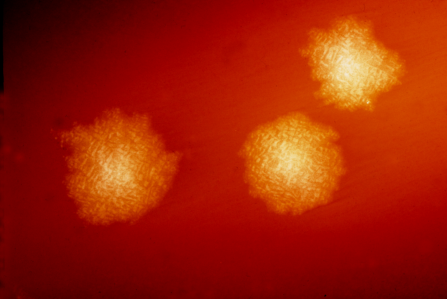Novel rapid method for typing of Clostridium difficile could limit outbreaks

The Public Health Agency of Sweden has developed a method of typing that can allow laboratories to faster establish the presence of hospital outbreaks of the intestinal bacterium Clostridium difficile. The findings are now published in PLOS ONE.
The Clostridium difficile bacteria exist in the intestines of 2-5 per cent of the healthy population, and is rather common among infants. In certain circumstances the bacteria can induce diarrhea in persons treated with antibiotics. The diarrhea is in some cases serious.
The majority of the cases occur at hospitals. This is due to the fact that hospitals and other health facilities accommodate a lot of elderly and sick people, carrying a higher risk of being affected, but it is also a result of a vast prescription of antibiotics in the health care system.
Therefore correct choice of antibiotics is one of the most important means by which health professionals can reduce the risk of patients falling ill being sick due to Clostridium difficile. The infection is usually caused by the patient's own strain of bacteria, however transmission between patients also occurs and when that is the case it is important to take action immediately.
To enable faster identification of outbreaks caused by transmission between patients, the Public Health Agency of Sweden has developed a method that can be used by local laboratories. The method identifies specific proteins on the surface of the bacteria, using a laser pulse (MALDI-TOF). Details about the method, alongside an evaluation of it, is now published in the scientific journal PLOS ONE in an article written by Dr Thomas Akerlund, microbiologist at the Public Health Agency of Sweden and Dr Kristina Rizzardi, molecular biologist at the Agency.
"A unique pattern is shown, making it possible identify bacteria of the same clonal type," says Dr Kristina Rizzardi.
"Within 30 minutes you can tell whether you have strains of the same clonal type, and therefore a probable transmission between patients, or whether a patient has symptoms from his or her own bacteria," says Dr Thomas Akerlund.
Early detection of transmission of Clostridium difficile between patients enables faster action from health facilities to limit the outbreak.
"The most important measures to stop an outbreak are strict adherence to basic hygiene routines. Affected patients should be given care in single rooms only. Proper cleaning of the areas near each patient is also crucial since the bacterial spores are resistant and sometimes difficult to get rid of," says Karin Tegmark Wisell, physician and head of the microbiological department at the Public Health Agency of Sweden.
This unprecedented method was developed in 2013 and tested with satisfying results in 2014.
More information: PLOS ONE, dx.plos.org/10.1371/journal.pone.0122457
















